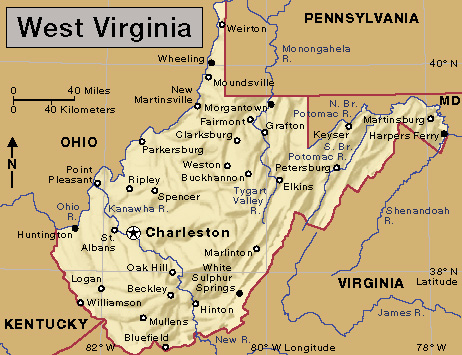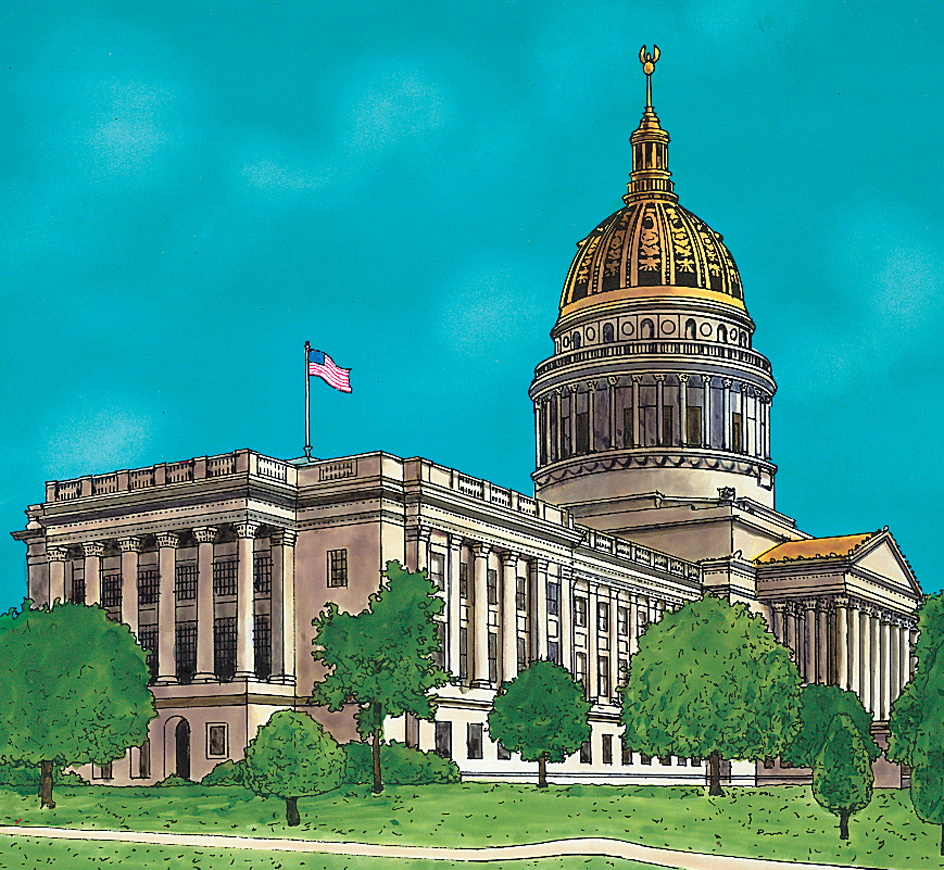Charleston (pop. 48,864; met. area pop. 210,605) is the capital and leading industrial, trade, and transportation center of West Virginia. Charleston lies at the meeting place of the Elk and Kanawha rivers.

Description.
Charleston, the county seat of Kanawha County, covers 33 square miles (85 square kilometers). Its metropolitan area occupies 1,758 square miles (4,553 square kilometers) and covers Boone, Clay, and Kanawha counties. The State Capitol and the central business district are about 2 miles (3 kilometers) apart on the north bank of the Kanawha River.

Charleston is the home of the University of Charleston. A campus of Marshall University Graduate College is in nearby South Charleston, and West Virginia State University is in nearby Institute. Charleston has a ballet company, a symphony orchestra, a light opera company, and theater groups. The Clay Center for the Arts and Sciences of West Virginia includes a concert hall, science and art museums, and a planetarium. The West Virginia Culture Center at the Capitol features the state museum, the state library, and a theater. An important city festival is the Vandalia Gathering, held Memorial Day weekend.
Economy.
Government, manufacturing, and retail and wholesale trade together employ more than half of the city’s workers. The Charleston metropolitan area has hundreds of manufacturing plants. The chemical industry provides much of the city’s industrial income. The industry relies heavily on coal, natural gas, petroleum, and salt from the nearby area. Other products of Charleston include automotive and electrical machinery parts, metal products, plastics, and processed food.
Barge lines and railroad freight lines serve the city. Charleston also has passenger train service. Yeager Airport lies just outside the city.
Government and history.
Charleston has a mayor-council form of government. The voters elect the mayor and council members to four-year terms.
Shawnee Indians and other tribes hunted in the Kanawha Valley when white settlers first arrived there. In 1787, George Clendenin, a Virginia legislator, bought the land where Charleston now stands. The next year, he and a group of soldiers built Fort Lee there to protect the Kanawha Valley.
Settlers soon built cabins near Fort Lee. In 1794, the settlement officially became a town, which Clendenin named Charlestown in honor of his father, Charles Clendenin. During the 1790’s, the famous frontiersman Daniel Boone lived near the town and served the area briefly as a representative in the state legislature. The people of Charlestown changed the town’s name to Charleston in 1818.
A road that crossed the Appalachian Mountains was extended to Charleston in the early 1800’s. The town’s main industry was the mining and processing of salt. The West Virginia region formed part of Virginia until 1863, when West Virginia became a state. Charleston served as the state capital from 1870 to 1875 and became the permanent capital in 1885.
Coal mining in the Charleston area expanded greatly after 1873, when rail lines reached the city. Trains provided a practical way to ship the coal to Eastern cities.
During the early 1900’s, Charleston’s coal, salt, and other natural resources attracted several chemical companies to the area. These factories created many new jobs, and the city’s population grew. But in the 1960’s and 1970’s, several local industries declined, and many families left. Charleston’s population decreased from 85,796 to 63,968. The population decrease continued during the 1980’s.
In the early 1980’s, much urban renewal took place in the central business district. Projects included restoration of the civic center and construction of office buildings, apartment buildings, hotels, a coliseum, and a shopping mall. From the 1980’s to the early 2000’s, the city’s population continued to fall as people moved to the suburbs. The retail center shifted from a downtown mall to a number of shopping complexes south of the city. In the late 1990’s and early 2000’s, Charleston’s chemical industry faced uncertainty as mergers and labor-force reductions took place. However, automotive-parts manufacturing expanded in the metropolitan area.
For the monthly weather in Charleston, see West Virginia (Climate).
